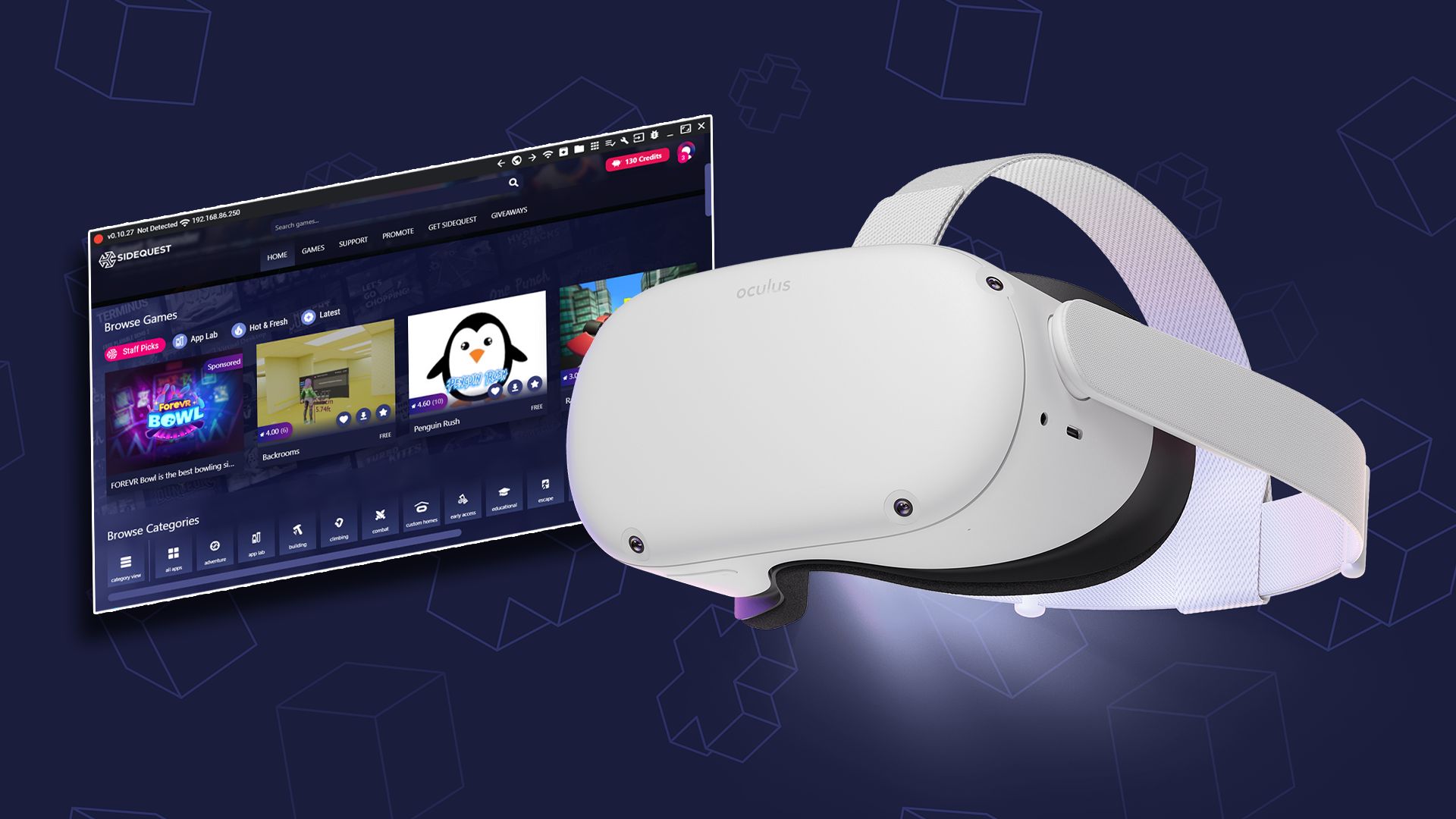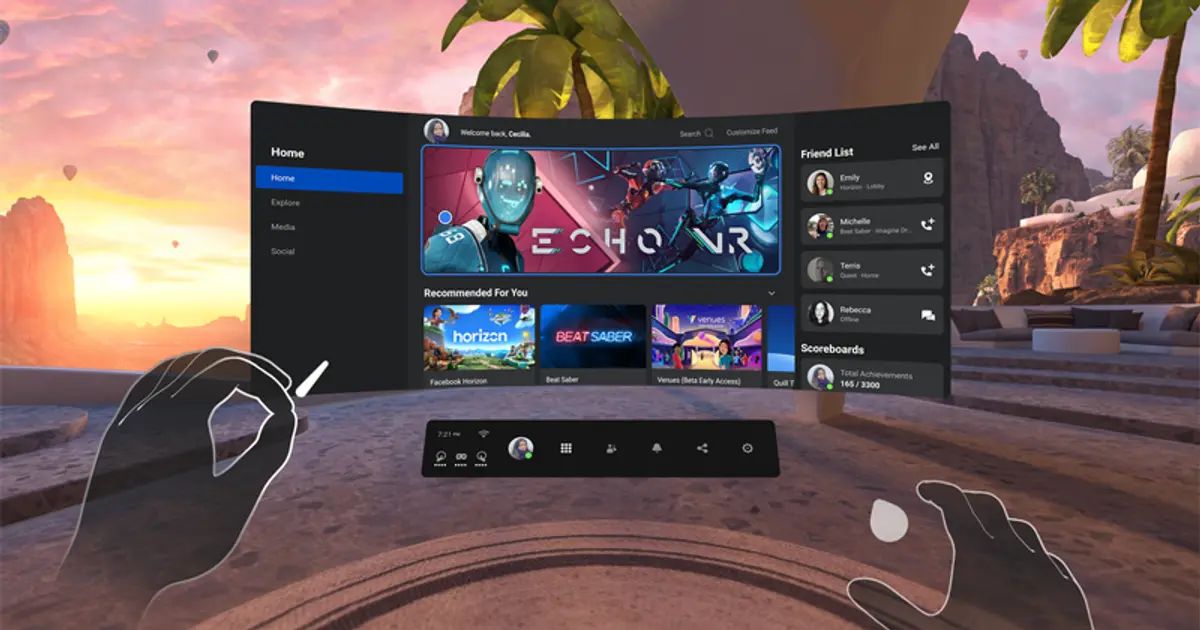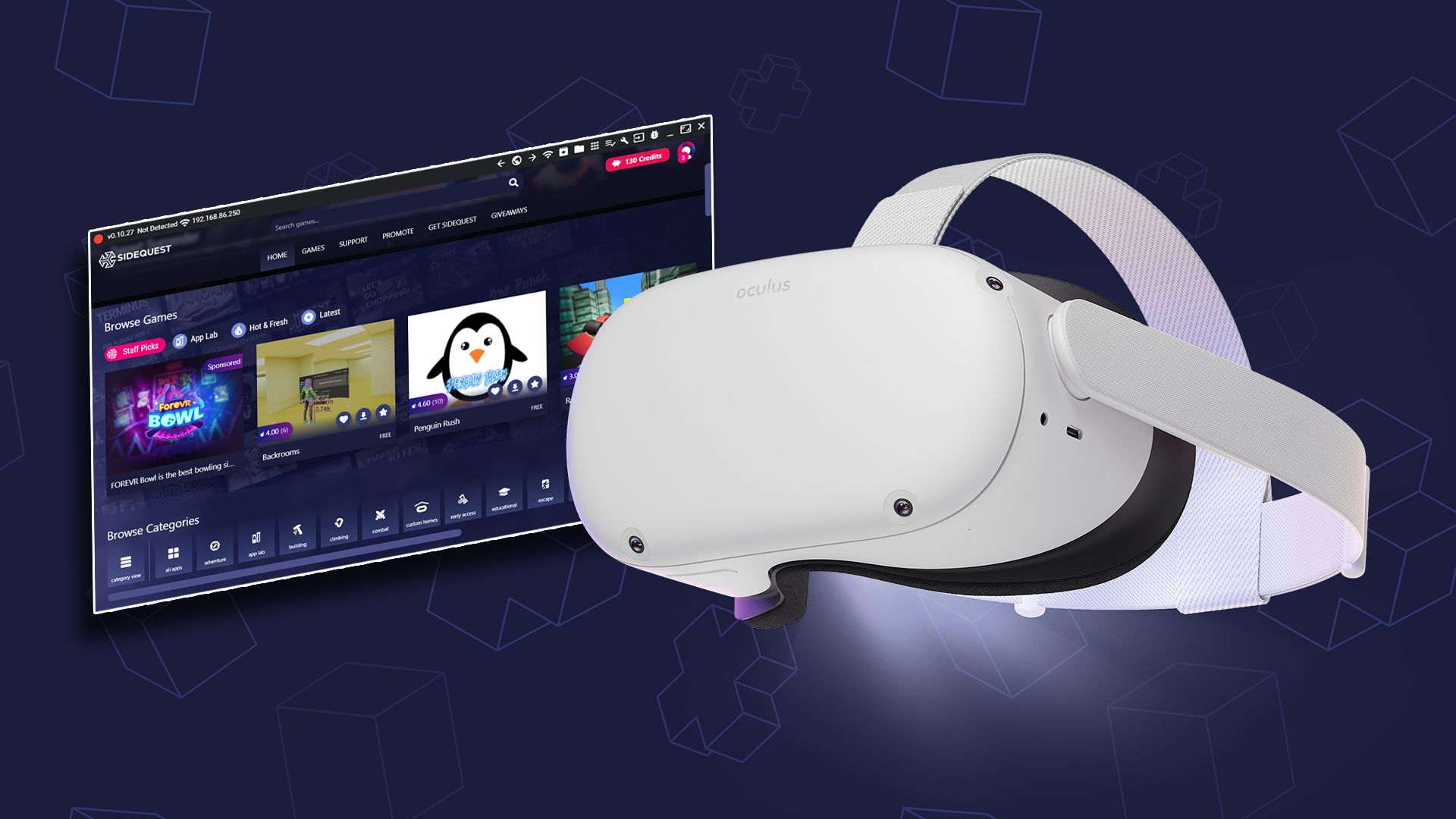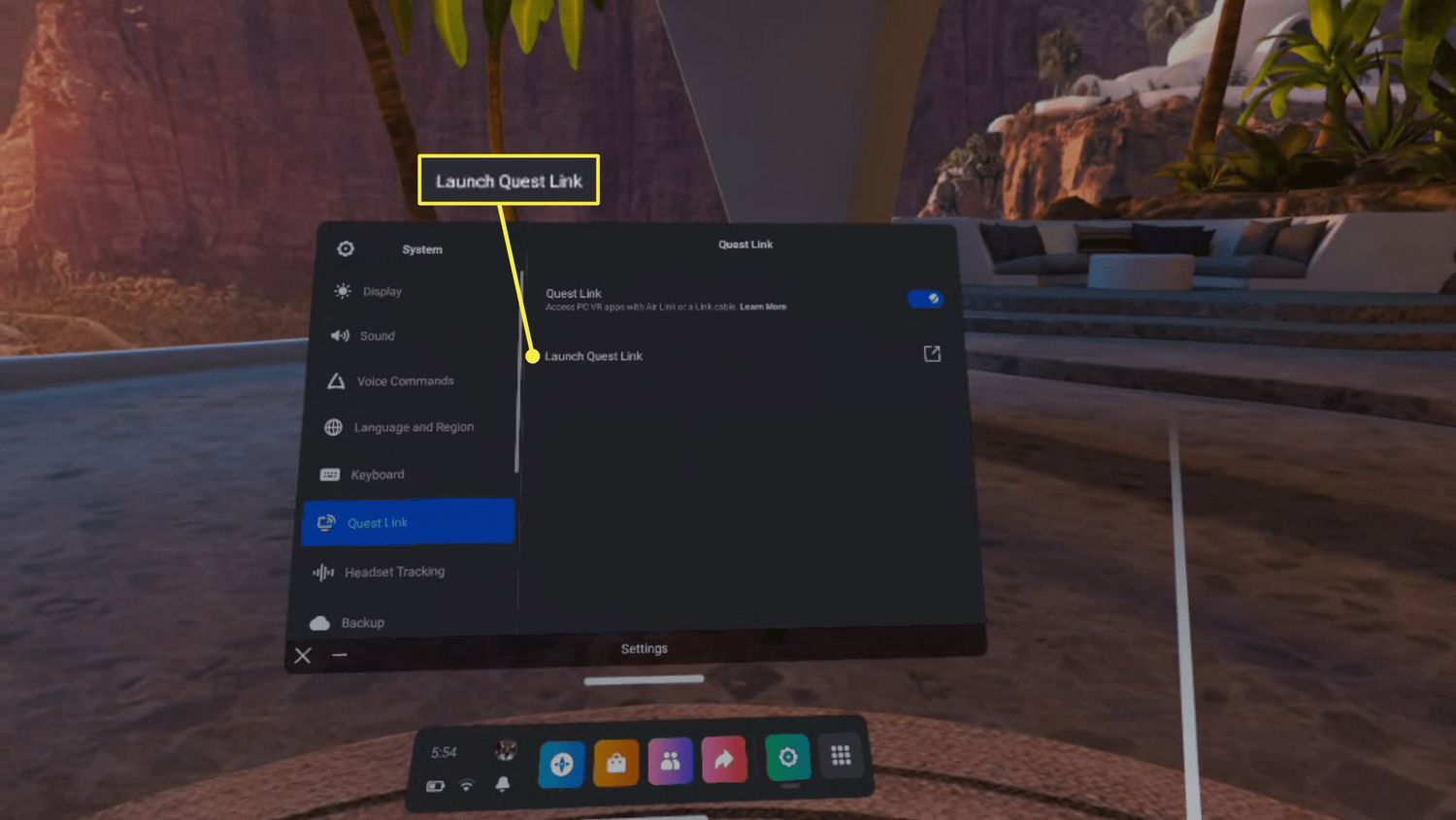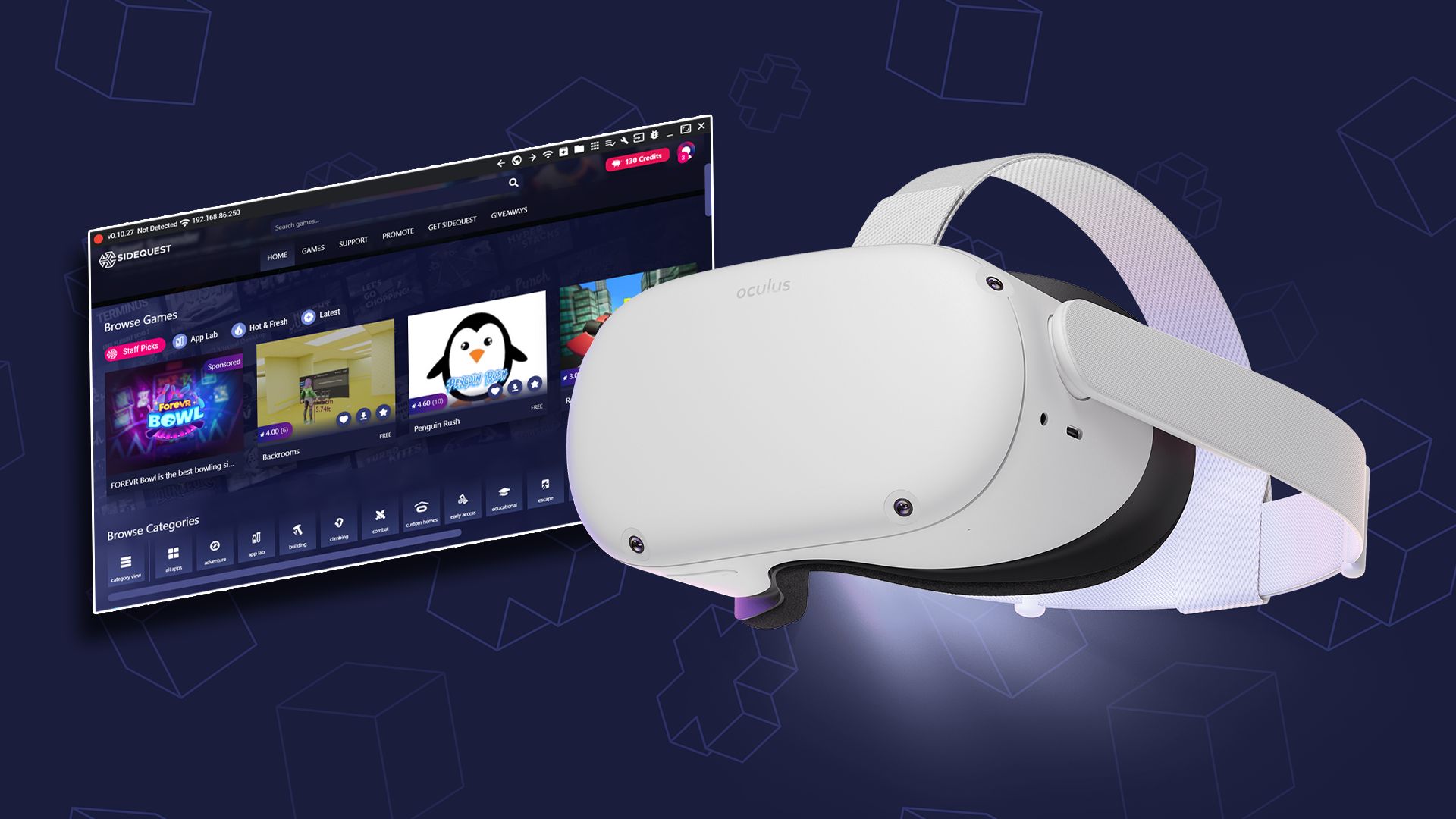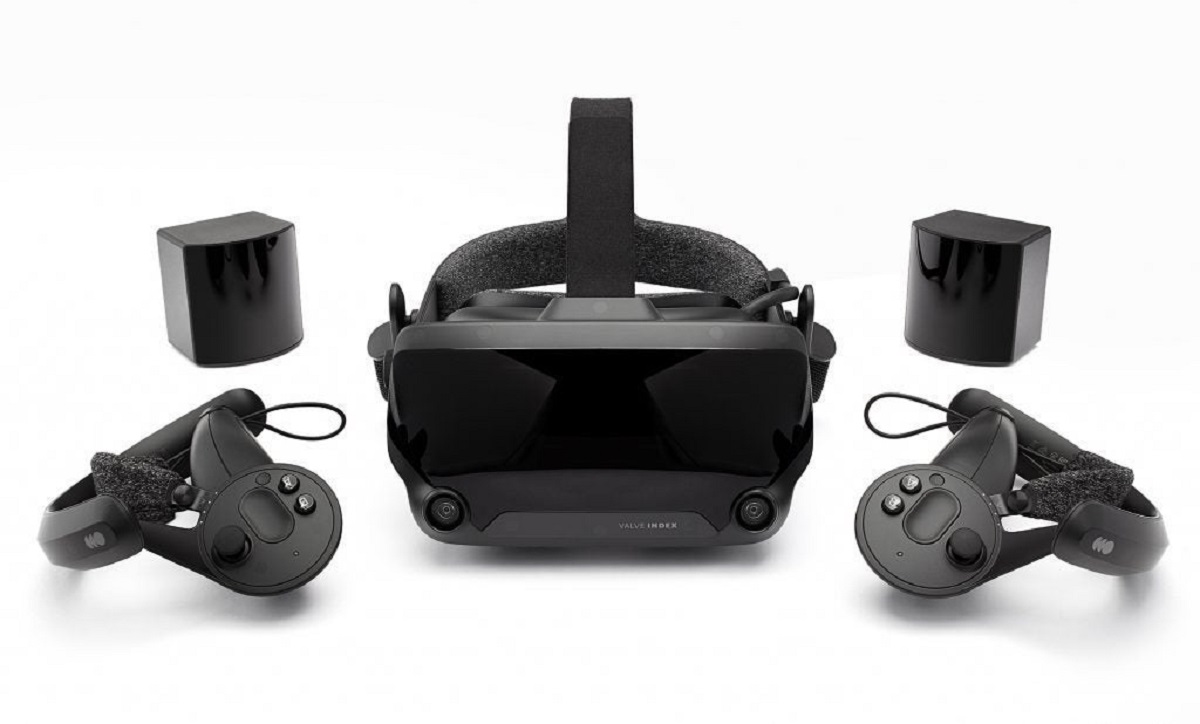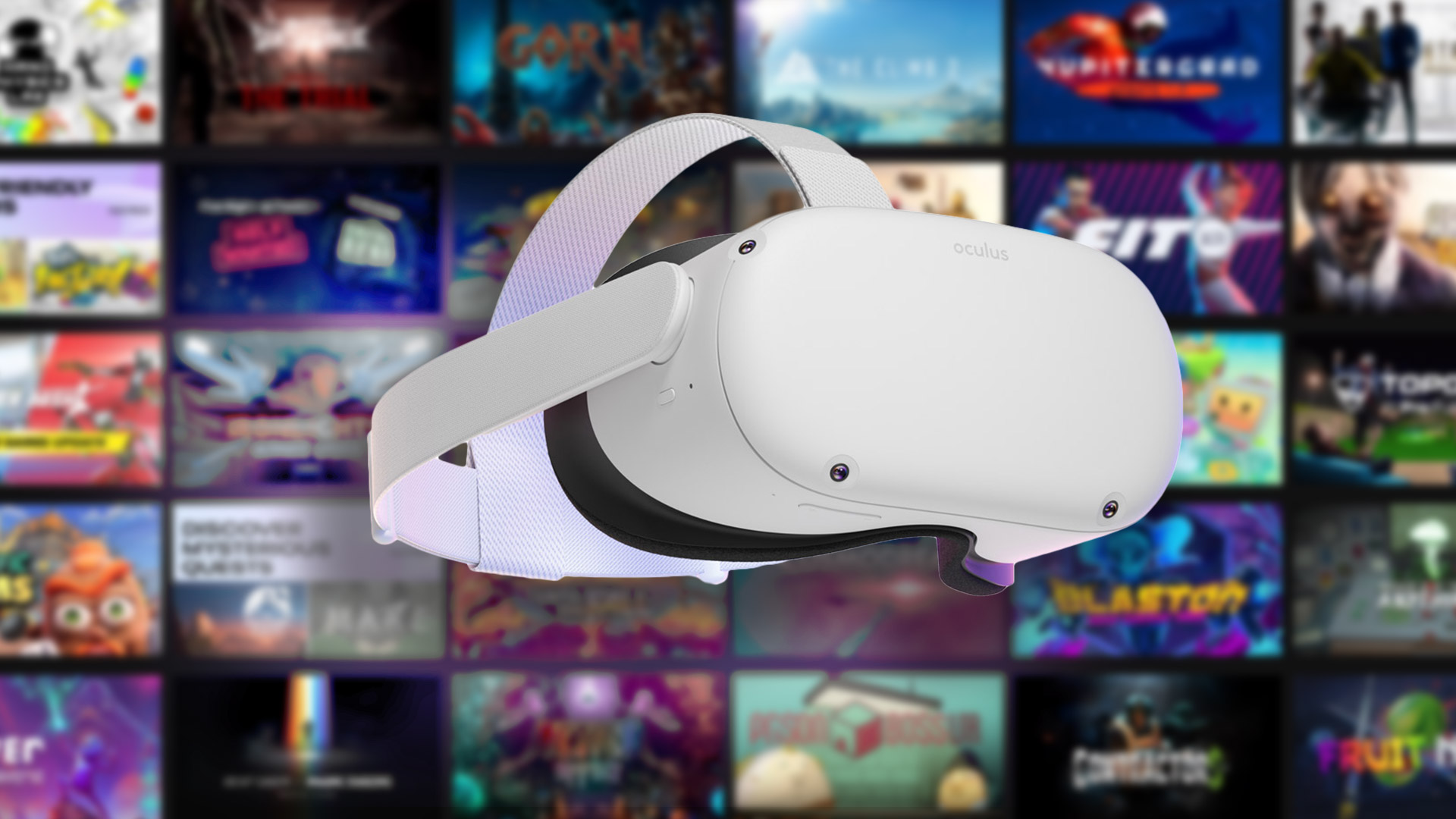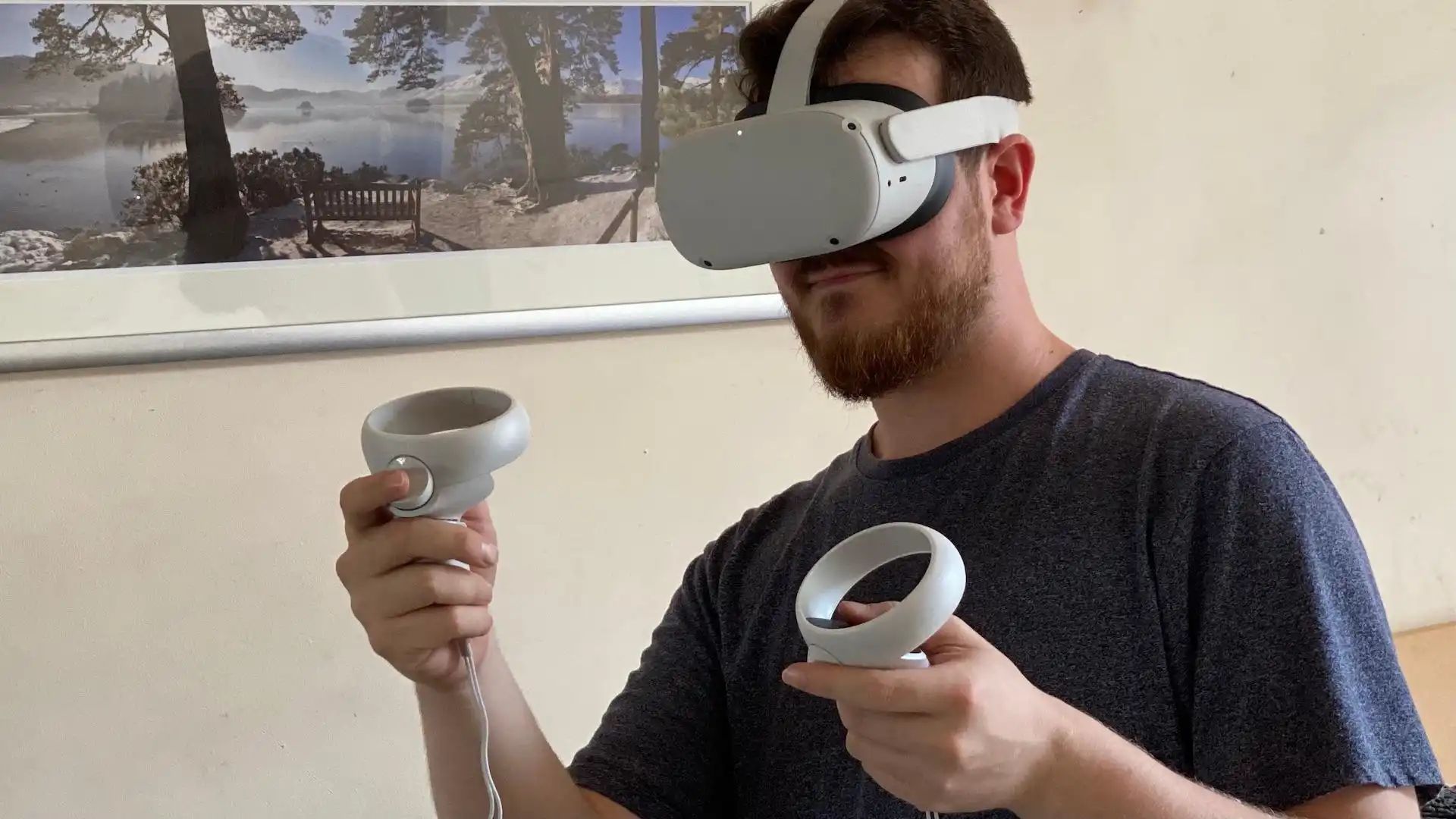Introduction
Are you frustrated with slow download speeds on your Oculus Quest 2? Streaming games and experiences on this popular virtual reality headset can be an immersive and exciting adventure, but it can quickly lose its appeal if you’re stuck waiting for ages for downloads to complete. The good news is, there are several steps you can take to increase download speed and enjoy your VR world without frustration.
Before we dive into the solutions, it’s essential to understand that download speeds can be affected by various factors, such as the quality of your internet connection, the server’s capacity, and even your Oculus Quest 2 device itself. By following the tips and tricks outlined in this guide, you can take control of your download speeds and experience smoother and faster installations.
In this article, we will explore the various methods to increase download speed on your Oculus Quest 2. Whether you’re trying to download games, updates, or new experiences, these proven techniques will help you optimize your VR device and get into the action faster.
Check Internet Connection
One of the primary factors influencing download speed is the quality and stability of your internet connection. Before troubleshooting other potential causes, it’s crucial to ensure that your internet connection is working optimally. Here are a few steps you can take to check and improve your internet connection for faster Oculus Quest 2 downloads.
1. Check your connection speed: Use an online speed test tool to determine your current download and upload speeds. Compare them to the speeds promised by your internet service provider (ISP) to ensure you’re getting the expected performance.
2. Switch to a 5GHz network: If you’re using a dual-band router, make sure your Oculus Quest 2 is connected to the 5GHz network instead of the slower 2.4GHz network. The 5GHz band typically offers faster speeds and less interference, resulting in improved download performance.
3. Move closer to your router: If you’re experiencing a weak Wi-Fi signal, try moving your Oculus Quest 2 closer to the router to strengthen the connection. Wi-Fi signals can weaken when obstructed by walls, furniture, or other objects, so minimizing the distance can help improve download speeds.
4. Reduce network congestion: If you share your internet connection with multiple devices, especially during peak hours, network congestion can occur and slow down your download speeds. Prioritize your Oculus Quest 2 by disconnecting or disabling unnecessary devices or applications that may be consuming bandwidth.
5. Reset your router: Occasionally, routers can experience glitches or performance issues. Try unplugging your router from the power source, waiting for a few minutes, and then plugging it back in. This simple reset can often resolve temporary network issues and improve download speeds.
By following these steps, you can ensure that your internet connection is working optimally and maximize your download speeds on the Oculus Quest 2. However, if you’re still experiencing sluggish performance, it’s time to explore other potential solutions.
Restart Your Oculus Quest 2
Sometimes, the simplest solution can be the most effective. Restarting your Oculus Quest 2 can help resolve various performance issues, including slow download speeds. Here’s how you can do it:
1. Turn off your Oculus Quest 2: Press and hold the power button located on the right side of the headset until the power menu appears on the screen.
2. Select “Power Off” or “Restart”: Use the Oculus Touch controllers or the buttons on the side of the headset to navigate the menu and choose the desired option. If you’re experiencing persistent slow download speeds, it’s recommended to select “Power Off” for a complete restart.
3. Wait for a few seconds: After turning off your Oculus Quest 2, wait for at least 10 seconds before turning it back on. This allows the device to fully shut down and reset.
4. Turn on your Oculus Quest 2: Press and hold the power button again until the Oculus logo appears on the screen. Release the button, and the device will start booting up.
By restarting your Oculus Quest 2, you’re essentially clearing temporary files and refreshing the device’s system, which can help improve overall performance, including download speeds. It’s a simple yet effective step that is often overlooked but can make a significant difference.
After restarting your Oculus Quest 2, try downloading again and observe if the download speeds have improved. If not, don’t worry. There are more techniques to explore in our quest for faster downloads.
Close Background Apps
Having multiple apps running in the background can consume valuable system resources and impact the performance of your Oculus Quest 2, including download speeds. By closing unnecessary background apps, you can free up resources and potentially improve your download experience. Here’s how you can do it:
1. Access the Oculus Quest 2 menu: While in VR mode, press the Oculus button located on the right controller to open the menu.
2. Navigate to the “Apps” section: Use the controller to scroll and select the “Apps” tab in the bottom toolbar.
3. Close background apps: In the “Apps” section, you’ll see a list of apps that are currently running in the background. Select the app you want to close and click on the “X” icon to close it.
It’s recommended to close any apps that you’re not actively using to ensure that they are not consuming resources and affecting your download speeds. Pay close attention to apps that are known to be resource-intensive or running services in the background, such as streaming platforms or social media apps.
Additionally, make sure to disable any apps that may have an automatic startup feature enabled. These apps can run in the background even when you’re not actively using them, consuming system resources and potentially impacting your network performance.
Once you have closed unnecessary background apps, try downloading on your Oculus Quest 2 again and monitor if there is an improvement in download speeds. If the issue persists, don’t worry. We have more techniques to explore in our quest to maximize your download speed.
Clear Cache of Oculus App
Clearing the cache of the Oculus app on your connected device can help resolve performance issues, including slow download speeds. The cache stores temporary files that can sometimes become corrupted or bloated, impacting the app’s efficiency. Here’s how you can clear the cache of the Oculus app:
1. Open the Settings menu: Launch the Oculus app on your connected device and access the settings by clicking on the gear icon in the bottom-right corner.
2. Navigate to “Settings” and select “Storage”: In the settings menu, scroll down and choose the “Storage” option.
3. Clear app cache: In the storage settings, you will find a list of apps. Look for the Oculus app and select it. On the next screen, you will see the option to “Clear Data” or “Clear Cache.” Choose the option to clear the cache of the Oculus app.
4. Confirm the action: A confirmation prompt may appear. Confirm that you want to clear the cache of the Oculus app. Please note that this will not delete any of your personal data or purchased content.
Clearing the cache of the Oculus app can help remove any temporary files or corrupted data that may be affecting its performance, including download speeds. After clearing the cache, restart the Oculus Quest 2 and attempt your downloads again to see if there is an improvement in speed.
If you’re still experiencing slow download speeds, don’t worry. There are more strategies to explore in our quest for faster downloads on your Oculus Quest 2.
Optimize Wi-Fi Connection
A stable and fast Wi-Fi connection is crucial for optimal download speeds on your Oculus Quest 2. By optimizing your Wi-Fi connection, you can minimize interference and maximize performance. Here are some tips to help optimize your Wi-Fi connection:
1. Position your router correctly: Ensure that your router is positioned in a central location, away from obstructions. Walls, furniture, and other objects can interfere with the Wi-Fi signal and decrease download speeds. Placing the router in an elevated position can also help improve coverage.
2. Adjust your router’s channel: Wi-Fi routers operate on different channels, and interference can occur if multiple routers in your area are using the same channel. Access your router’s settings through a web browser and change the channel to a less congested one to avoid interference and potentially improve speeds.
3. Upgrade your router: If you’re using an older router, it may not support the latest Wi-Fi standards, leading to slower speeds. Consider upgrading to a newer router that supports Wi-Fi 6 or 802.11ac for faster and more stable connections.
4. Reduce interference: Other electronic devices, such as cordless phones, baby monitors, or microwave ovens, can interfere with the Wi-Fi signal. Keep these devices away from your router, or consider switching to devices that operate on a different frequency to minimize interruption.
5. Enable Quality of Service (QoS): Some routers have a QoS feature that allows you to prioritize certain types of network traffic. Enable QoS and set the priority for gaming or streaming applications to ensure that your Oculus Quest 2 has sufficient bandwidth for downloading without interruption.
By optimizing your Wi-Fi connection, you can enhance the speed and stability of your Oculus Quest 2 downloads. Remember, a strong and reliable connection is essential for an enjoyable VR experience.
If you’re still encountering slow download speeds, don’t worry. There are additional techniques to explore in our pursuit of faster downloads on your Oculus Quest 2.
Use a Wired Connection
While Wi-Fi can provide convenience and flexibility, a wired connection offers a more stable and reliable network connection for your Oculus Quest 2. Using an Ethernet cable to connect your device directly to the router can help minimize interference and improve download speeds. Here’s how you can set up a wired connection:
1. Check your router: Ensure that your router has an available Ethernet port. Most routers have multiple ports labeled “LAN” or “Ethernet.”
2. Get an Ethernet cable: Purchase an Ethernet cable of sufficient length to reach from your router to your Oculus Quest 2. Ethernet cables are widely available in various lengths.
3. Connect the Ethernet cable to your Oculus Quest 2: Locate the USB-C port on your Oculus Quest 2 headset. Connect one end of the Ethernet cable to the USB-to-Ethernet adapter (if necessary), and then connect the other end to the USB-C port on your headset. Ensure a secure and snug connection.
4. Connect the Ethernet cable to your router: Plug the other end of the Ethernet cable into an available LAN or Ethernet port on your router. Ensure a secure connection.
5. Configure your Oculus Quest 2: On your Oculus Quest 2, go to the Settings menu and navigate to the Network section. Select “Connect to network” and follow the on-screen instructions to establish a wired network connection.
By using a wired connection instead of relying on Wi-Fi, you can eliminate potential Wi-Fi interference and enjoy a more stable connection. This, in turn, can lead to faster download speeds and a smoother overall VR experience.
If you’re unable to use a wired connection due to limitations or constraints, don’t worry. There are still more strategies to explore in our quest for faster downloads on your Oculus Quest 2.
Pause Other Downloads
If you’re experiencing slow download speeds on your Oculus Quest 2, it’s possible that other downloads or updates on your network are consuming bandwidth and affecting your overall connection. By pausing or prioritizing the download process on competing devices, you can allocate more resources to your Oculus Quest 2 and potentially improve download speeds. Here’s how you can do it:
1. Check for other downloads: Identify any devices on your network that may be engaged in simultaneous downloads or updates. This can include smartphones, tablets, computers, or gaming consoles.
2. Pause or prioritize downloads: On each device, pause any ongoing downloads or updates that are not critical. If prioritization settings are available, allocate more bandwidth and resources to your Oculus Quest 2.
3. Manage background processes: Some devices may have background processes or applications running, consuming bandwidth. Close unnecessary programs or ensure that they are not using excessive network resources.
By reducing the competition for bandwidth on your network, you can give your Oculus Quest 2 more room to download and install content at a faster speed. Once you’ve made these adjustments, monitor the download progress on your headset and see if there is an improvement in speed.
If you’re still not achieving the desired download speeds, there are more techniques to explore in our quest for faster downloads on your Oculus Quest 2.
Manage App Permissions
App permissions can have an impact on the overall performance of your Oculus Quest 2, including download speeds. By managing app permissions, you can ensure that unnecessary background processes or features are not affecting your network connection. Here’s how you can manage app permissions on your Oculus Quest 2:
1. Access the Oculus Quest 2 settings: Put on your headset and navigate to the Settings menu.
2. Select “Device”: Scroll down and select the “Device” option from the settings menu.
3. Choose “Apps”: In the Device settings, select “Apps” to view the list of installed applications on your Oculus Quest 2.
4. Select an app: Choose the app for which you want to manage permissions. This could be a game or an application that you suspect may be impacting your network performance.
5. Manage permissions: Within the app’s settings, you can often find a section where you can manage permissions. Disable any unnecessary permissions that the app may be using, such as accessing the internet or running in the background.
By managing app permissions, you can prevent certain apps from utilizing network resources or running unnecessary processes in the background. This can help improve download speeds by freeing up bandwidth and system resources on your Oculus Quest 2.
After managing app permissions, restart your Oculus Quest 2 and attempt your downloads again. Monitor the download speeds and assess if there is an improvement. If the issue persists, don’t worry. There are still more strategies to explore in our quest for faster downloads.
Check for Software Updates
Regularly updating the software on your Oculus Quest 2 is crucial for maintaining optimal performance and ensuring compatibility with the latest features and improvements. Sometimes, slow download speeds can be attributed to outdated software versions. Here’s how you can check for and install software updates on your Oculus Quest 2:
1. Connect to Wi-Fi: Ensure that your Oculus Quest 2 is connected to a stable Wi-Fi network before proceeding with the software update.
2. Access the Settings menu: Put on your headset and navigate to the Settings menu.
3. Select “About”: Scroll down and select the “About” option from the settings menu.
4. Check for updates: Within the About section, you’ll find the “Software Update” option. Select it to check for any available updates for your Oculus Quest 2.
5. Install updates: If an update is available, follow the on-screen prompts to download and install the software update. It may take some time to complete depending on the size of the update.
By regularly updating your Oculus Quest 2, you ensure that you have the latest bug fixes, performance enhancements, and compatibility updates. This, in turn, can positively impact your download speeds and overall VR experience.
After installing the software update, try your downloads again and observe if there is an improvement in speed. If the issue persists, don’t worry. There are still more techniques to explore in our quest for faster downloads on your Oculus Quest 2.
Conclusion
Slow download speeds can be frustrating when you’re eager to jump into immersive virtual reality experiences on your Oculus Quest 2. However, by following the steps and techniques outlined in this guide, you can improve your download speeds and enjoy a smoother VR journey.
Start by checking your internet connection and ensuring that it meets the required speed standards. Restarting your Oculus Quest 2 and closing unnecessary background apps can also help optimize performance. Clearing the cache of the Oculus app and optimizing your Wi-Fi connection are additional steps to consider.
If possible, use a wired connection to maximize stability and download speeds. Pause other downloads and manage app permissions to prioritize your Oculus Quest 2’s network resources. Lastly, regularly check for software updates to ensure you have the latest enhancements and bug fixes.
Remember that download speeds can be influenced by various factors, including the internet connection, server capacity, and the Oculus Quest 2 device itself. By implementing these tips and tricks, you can take control of your download speeds and enhance your overall VR experience.
If you’re still experiencing slow download speeds after trying these techniques, it’s advisable to reach out to Oculus Support for further assistance. They can provide personalized guidance and troubleshoot any underlying issues that may be affecting your download speeds.
Now that you’re equipped with the knowledge to enhance your download speeds, it’s time to dive back into your Oculus Quest 2 and explore the immersive VR world without the frustration of lengthy downloads. Happy gaming!







